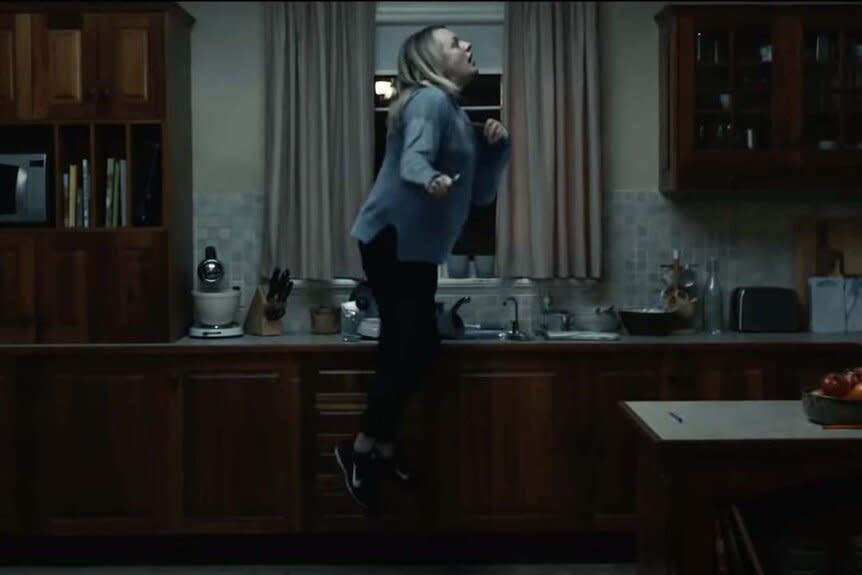How the 2020 Invisible Man Weaponizes Emptiness
- Oops!Something went wrong.Please try again later.
- Oops!Something went wrong.Please try again later.
- Oops!Something went wrong.Please try again later.
The 1933 Universal Classic Monsters film The Invisible Man is a classic horror movie of the era, one that’s still celebrated today for Claude Rains’ performance and some special effects that were remarkable for their time — and still hold up today. The image of Rains’ character, Dr. Jack Griffin, unwrapping the bandages around his face to reveal that there’s nothing underneath are stunning. It’s a great movie, but it falls into a trap that many films about invisible figures, including Hollow Man (now streaming on Peacock) and several others, fall into. The characters’ invisibility tends to be at its most effective because of what the audience can see: like footprints in the snow or a “floating” weapon. It’s a bit of a paradox because film is a visual medium and it’s inherently impossible to visualize invisibility.
It’s a paradox the 2020 Invisible Man solved. As directed by Leigh Whannell, The Invisible Man weaponizes nothingness.
RELATED: Reimagining The Invisible Man as a story about women
The most recent adaptation of The Invisible Man, which is also currently streaming on Peacock, makes some updates to H. G. Wells' story. The protagonist is Elisabeth Moss, playing a woman named Cecilia who is trying to escape her abusive husband, Adrian (Oliver Jackson-Cohen). He’s a wealthy, powerful businessman and a leader in the field of optics technology, and he’s been working on a high-tech suit that renders the wearer invisible. So, when he’s reported to have died after Cecilia manages to escape, she’s understandably paranoid that he might really be there — wearing his invisibility suit to gaslight and torment her.
How Leigh Whannell's The Invisible Man Utilizes Empty Space to Chilling Effect

The Invisible Man (2020) Photo: The Invisible Man (2020) - Attacked at Home Scene (5/10) | Movieclips YouTube
While The Invisible Man does feature some of the hallmarks of past invisibility-centric horror movies, like floating knives, eerie sequences where the titular man is half-visible, and atmospheric evidence of his presence, the movie is at its scariest when it shows literally nothing. Cecilia will be in her friend’s home and the camera will pan over to a hallway and linger there. As tension mounts, it eventually pans back. Nothing happened in the hallway. There was no creak of a floorboard nor disturbed picture on the wall. For all we (and Cecilia) know, the hallway truly could have been empty. But, that’s exactly what it would look like if there were an invisible man standing there.
RELATED: How The 2020 Invisible Man Made Invisible Action Look Real
Whannell was very intentional in his use of “empty” space to generate suspense and paranoia in his audience.
“The audience just bought a ticket to a movie called The Invisible Man. So any empty space I show them, they're going to be suspicious of it,” Whannell told GQ when the film came out. “I weaponized that knowledge against the audience. If I pan over to an empty corner of the room, the audience knows that I'm doing that for a reason.”
It’s an incredibly effective, deceptively simple trick that helps make The Invisible Man one of the scariest movies of the decade so far. And, all it took was an empty hallway… or is it?
The Invisible Man (2020) is now streaming on Peacock.

